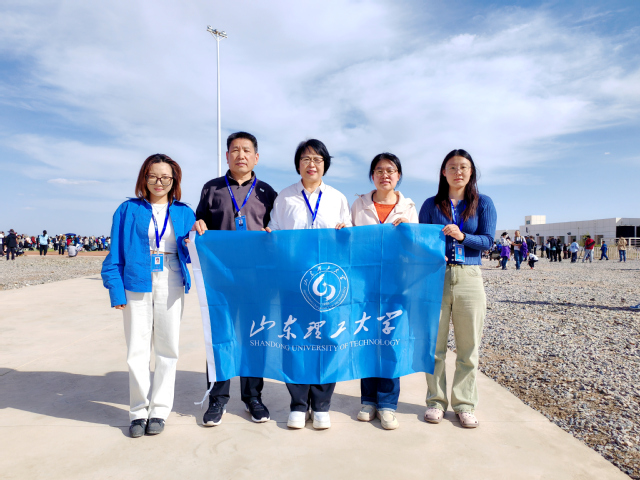At 17:17 on April 24th, Shenzhou20 crewed spacecraft was successfully launched. Planarians, carefully chosen by Professor Cao Zhonghong and her team from the School of Life Sciences and Medicine of SDUT, boarded on the Spacecraft and embarked on their first space mission. These planarians will undergo a six-day space regeneration experiment to help scientists explore the mystery of cellular regeneration. This is a milestone that marked the successful implementation of Professor CAO Zhonghong’s research project. SDUT President LI Yuxia and leaders of School of Life Sciences and Medicine traveled all the way to the Jiuquan Satellite Launch Center to extend their encouragement to the project team and witness this historic moment together.
Planarians, a species of flatworm renowned for extraordinary regenerative capabilities, measure 1-2 cm in length and boast an evolutionary history spanning over 520 million years. They are one of the Earth's most ancient organisms and one of the most commonly used model organisms in biological research.

Professor CAO Zhonghong explained that these organisms demonstrate an exceptional capacity for tissue repair: when bisected, planarians can regenerate lost muscles, skin, intestines, and even an entire brain from each segment---a process repeatable indefinitely.The experiment under discussion primarily focuses on the characteristic changes in planarian regeneration under space microgravity and radiation conditions and the potential molecular mechanisms involved in this regulatory process, in hope of identifying specific signature molecules that can potentially mitigate injuries to the astronauts caused by prolonged spaceflight and offer tissue repair.
According to Professor CAO Zhonghong, the planarians selected for the mission have to meet rigorous criteria: they must possess two visible eyespots, be 8-10mm in length, and demonstrate excellent health and vitality. Each selected worm was carefully dissected into three segments --- head, middle section, and tail. After stringent selection, 48 most qualified segments have earned the distinction of becoming the lucky worms aboard Shenzhou XX.
Researchers of SDUT developed customized experimental cartridges equipped with microchips for the planarians to space. Upon reaching orbit, astronauts will install these cartridges into the universal biological culture module for microfauna within the space station's life and ecology experimental cabinet to initiate the experiments.Under the commands from the earth, they will complete sample image capturing, automated fluid exchange, sample fixation, and real-time data transmission to Earth. Concurrently, ground-based researchers conducted synchronized experiments in an experimental environment simulating the conditions in the space station.
Professor ZHAO Bosheng from the School of Life Sciences and Medicine of SDUT stated: Through this experiment, we will detect if there exist differences between the planarian regeneration on the Earth and that in the space station, and obtain differential gene expression profiles at key regeneration phases in both space composite and terrestrial environments.” With over 70% genomic similarity between planarians and humans, this research holds significant implications for understanding human cellular aging processes and developing anti-aging interventions.
SDUT has conducted pioneering research on planarian regeneration mechanisms for over two decades and established a mature research team and robust experimental models. In 2022, Professor CAO Zhonghong secured approval for the project Investigation on Effects and Mechanisms of Space Microgravity and Radiation Environments on Planarian Regeneration, marking a significant advancement in planarian research.
